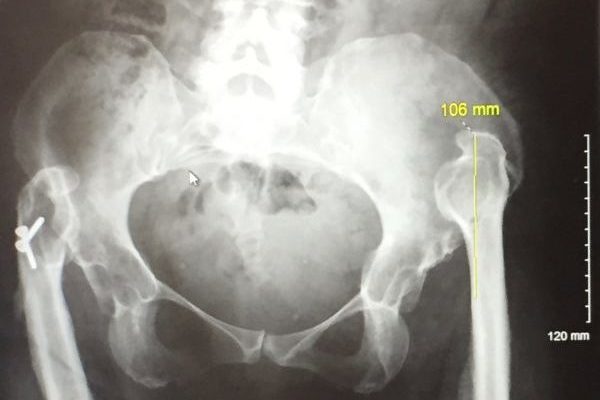Steroid Injection For Hip Pain
 Using steroid injections as an option has helped to manage localised pain in hip joint
Using steroid injections as an option has helped to manage localised pain in hip joint
Simone shares her story of how she has found an effective way to manage the pain she is experiencing in her hip.
"My hip joint, like so many other thalidomiders', isn’t properly formed," she explains. "I don’t have a ball and socket joint, instead, my shortened femur/thigh bone is attached higher up the side of my pelvis and is held there with muscles, ligaments, tendons, etc.
My left leg is also slightly longer than my right.
Over the past 8 or so years, I have started to experience localised pain deep in my outer hip area on my left (longer) leg. Although I have regular deep tissue massage, which helps a lot – it is at night particularly where the pain in my hip is most troublesome. It doesn’t seem to matter which side I lie on, the pain wakes me during the night and it would be really painful to turn over. This meant I am fully awakened by the pain and the process of turning over."
The option of taking painkillers doesn't always work for everyone
"I don’t like to take any form of painkillers, but various things I had tried to help with the pain and broken nights sleep were Amitriptyline (made me feel very groggy in the mornings) and Naproxen (gave me a queasy feeling in my stomach).
In 2012 I had an ultrasound guided hydrocortisone (steroid) injection into my hip and that had really helped. It had been in anticipation of a 9 hour flight to New York. I had been keen to be as pain free as possible. I enjoyed a 100% reduction in my pain then which lasted about 6 months.
I decided that the pain I was now experiencing was worthy of another hydrocortisone shot.
Steroid injections can really help reduce inflammation. My masseuse can actually feel several areas of knotting and tenderness in my hip when she’s working on it.
After various checks on my hip with an MRI scan at the Royal National Orthopaedic Hospital, Stanmore – I was assured that my hip pain was muscular/neurological in origin – my bones all looked in excellent condition. Basically, because of the manner in which I walk, my muscles and tendons are all having to work exceptionally hard to move my leg.
I did end up being sent around the houses a little locally – trying to get the injection performed in the town where I live. After 6 months of wasted appointments and consultations, I went back to Mr Skinner at the Royal National Orthopaedic Hospital and asked whether I could have the injection administered there."
The injection is administered under sterile conditions similar to surgery
The process itself is a little like surgery, as it is crucial that the doctor keeps the area as
sterile as possible. The area of the injection is wiped over with an antibacterial wipe. All the equipment for the injection is laid out in a tray.
"The doctor started by taking a look at my hip with the ultrasound machine (the same equipment as they use to look at babies in the womb). He was clearly able to identify many areas of inflammation and also able to decide on the best site on the hip to administer the injection," Simone explains.
Then a small amount of local anaesthetic is injected into the area (bee sting), closely followed by a much larger and longer needle which goes deep into the muscle to deliver the hydrocortisone right to where it can be the most effective.
"I didn’t find the procedure painful at all and, although I had been advised to take someone with me in case I was unable to drive afterwards, I didn’t feel any numbness and I would have been fit and able to drive home."
Injection made a huge improvement to pain
"I was given a questionnaire to complete to assess the effectiveness of the injection on my pain over the next days and weeks.
I am very pleased to report that just 2 weeks after the injection there has been a huge improvement in my pain. It’s not completely vanished, but it’s not interfering with my sleep. The only time I feel pain is when hard pressure is applied to my hip (when I have my massage), but I am hopeful that I may still see a further reduction in the next week or so.
RNOH have told me that they’d be prepared to give me up to three steroid injections in 12 months. There are side effects to having steroid injections too often. Repeated cortisone injections are not healthy for tissues. Small amounts of cortisone in the body can be tolerated, but repeated injections can cause damage to tissues over time.
When the pain returns (and I am sure it will at some point in the future) I would contact RNOH and arrange to go back for another.
I don’t want pain that interferes with my life – and more importantly, disrupts a good nights sleep!"
